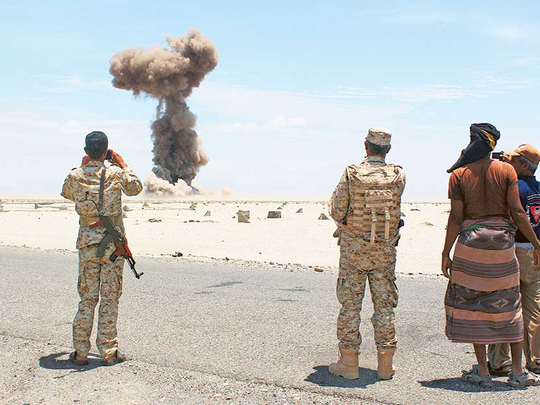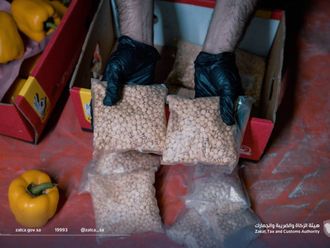
Dubai: The terrorist group Al Qaida has survived the death of its founder Osama Bin Laden on May 2, 2011, and bolstered its notoriety with attacks in Africa, Europe and Yemen.
Al Qaida had already proved its ability to resist after the September 11, 2001 attacks against the United States triggered a huge US military intervention in Afghanistan and Iraq.
Here are key dates in the group’s development since Egyptian Ayman Al Zawahiri succeeded Bin Laden as Al Qaida’s chief on June 16, 2011.
US ambassador killed in Benghazi
September 11, 2012, LIBYA: An attack carried out in part by Al Qaida militants against the US consulate in Benghazi, Libya, kills four Americans, including ambassador Chris Stevens.
Al Qaida in the Arabian Peninsula (AQAP) calls for more attacks against US diplomatic missions in the Middle East and Africa, and urges Muslims living in the West to target US interests. Violence that leaves more than 50 people dead sweeps across the Middle East amid protests against the anti-Islam film ‘Innocence of Muslims’, produced by a US religious group.
Deadly North African network
January 11, 2013: France and its allies intervene in northern Mali, where Al Qaida in the Islamic Maghreb (AQIM) has strongholds. Five days later, an AQIM affiliate in the Sahara desert, Al Murabitoun, attacks an Algerian natural gas complex at In Amenas, where 40 hostages and 29 attackers die.
The group’s leader, who is still at large, is Mokhtar Bel Mokhtar, a one-eyed terrorist dubbed “The Uncatchable” by French officials.
France expands its operations to include Burkina Faso, Chad, Mauritania and Niger, while AQIM terrorists stage attacks that kill dozens in Bamako, Ivory Coast and Ouagadougou.
France/India/Iraq/Syria
April 10, 2013, SYRIA: The Al Nusra Front pledges allegiance to Al Qaida, becoming a bitter rival to former allies in Iraq that have formed the Daesh. Al Nusra is among the many rebel groups in the Syrian conflict.
June 29, 2014, IRAQ: The self-proclamation of an Islamic caliphate in Iraq and Syria or Daesh, formerly a branch of Al Qaida in Iraq, fuels growing tension between the groups.
In September, 2014, Al Zawahiri announces the creation of Al Qaida in the Indian Subcontinent (AQIS).
January 7, 2015, FRANCE: An attack on the satirical weekly Charlie Hebdo in Paris kills 12 people and is claimed by AQAP.
Yemen/Somalia
April 2, 2015, YEMEN: AQAP captures Mukalla, a provincial capital in southeastern Yemen, benefiting from chaos that reigned after Al Houthi overthrew the legitimate government in the country.
On March 22, 2016, however, a US air strike on an AQAP training camp in the region kills 71 recruits.
The US has also targeted Al Qaida linked Al Shabab fighters in Somalia, with an air strike killing more than 150 in early March 2016. A Pentagon spokesman says they were “training for a large-scale attack”.
Holed up back home
August 13, 2015, AFGHANISTAN/PAKISTAN: Al Zawahiri pledges his group’s allegiance to new Taliban chief Mullah Akhtar Mansour, involved in a bitter leadership struggle. Al Zawahiri is believed to be in hiding in the Afghan-Pakistan border region, where Bin Laden holed up after the 9/11 attacks.












